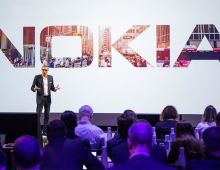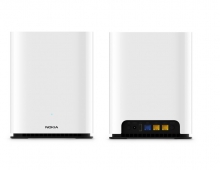
Nokia's Wireless Technology to Be New Bluetooth Standard
Nokia's ultra-low-power short-range wireless technology is to be developed as a new version of Bluetooth to connect devices such as watches and heart monitors, the company said on Tuesday.
An agreement to use the Nokia technology as the basis for an ultra-low-power Bluetooth standard should help to speed its use and acceptance -- rather than be a competing technology, the Bluetooth SIG industry interest group said.
The Wibree short-range radio link -- likely to be marketed as ultra-low-power Bluetooth -- uses just a fraction of the power of earlier systems and can hook up devices with small batteries or power capacity.
That could allow links for toys, sports monitors and watches, as well as sensors used in health monitoring, which have not been able to use Bluetooth until now because of its power demands.
The standard is expected to be finalized in about a year.
Nokia has worked since 2001 on Wibree, which provides a radio link of up to 10 meters (30 feet) between devices.
First to come were likely to be devices with only ultra-low-power versions, followed by some that combine both Bluetooth wireless connections.
Bluetooth was invented by Ericsson in the 1990s and subsequently given to the market as an open standard.
While Bluetooth operates with ultra high frequencies above 6 gigahertz for faster connections, Wibree is intended to operate in the 2.4 gigahertz band, and the two would be able to work in parallel.
Nokia said companies that had contributed to developing the standard included Broadcom Corp., CSR Plc, Epson, ItoM, Nordic Semiconductor, STMicroelectronics, Taiyo Yuden Co. Ltd, Texas Instruments and Amer Sports unit Suunto.
The Wibree short-range radio link -- likely to be marketed as ultra-low-power Bluetooth -- uses just a fraction of the power of earlier systems and can hook up devices with small batteries or power capacity.
That could allow links for toys, sports monitors and watches, as well as sensors used in health monitoring, which have not been able to use Bluetooth until now because of its power demands.
The standard is expected to be finalized in about a year.
Nokia has worked since 2001 on Wibree, which provides a radio link of up to 10 meters (30 feet) between devices.
First to come were likely to be devices with only ultra-low-power versions, followed by some that combine both Bluetooth wireless connections.
Bluetooth was invented by Ericsson in the 1990s and subsequently given to the market as an open standard.
While Bluetooth operates with ultra high frequencies above 6 gigahertz for faster connections, Wibree is intended to operate in the 2.4 gigahertz band, and the two would be able to work in parallel.
Nokia said companies that had contributed to developing the standard included Broadcom Corp., CSR Plc, Epson, ItoM, Nordic Semiconductor, STMicroelectronics, Taiyo Yuden Co. Ltd, Texas Instruments and Amer Sports unit Suunto.





















